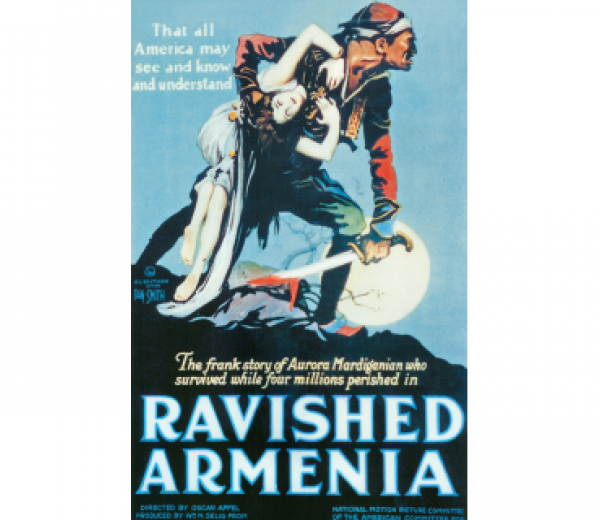Aurora Mardiganian
Submitted by 100lives on Fri, 02/20/2015 - 17:22
English
Intro:
She is known as Armenia's Joan of Arc - a woman who lived through uncountable horrors of the Genocide and then heroically relived them in a book and film of her life that told the world the truth.
Weight:
-5
Story elements:
Text:
She is known as Armenia's Joan of Arc - a woman who lived through uncountable horrors of the Genocide and then heroically relived them in a book and film of her life that told the world the truth.
Image:

Text:
Aurora Mardiganian was born Arshaluys Martikian in 1901, the third of eight children to a prosperous farmer and silk manufacturer in the town of Chmshkatsag in the Dersim province, which is now the Tunceli Province in modern day Turkey. She died aged 92 in a California care home after a life marked and marred by the early loss and cruelty she endured, but also by a resilient desire to help others.
Arshaluys was a promising student and budding violinist, with a sister engaged to be married and a brother already living in America, when the terrible events of 1915 started to unfold. She saw her father and a brother killed and was forced, with her mother and sisters, to join the mass deportation of Armenian women to the deserts of Syria.
Arshaluys was sold for the equivalent of 85 U.S. cents to the harem of a tribal leader.
She escaped, was recaptured by slave traders and escaped again. After an 18-month trek over the Dersim Mountains, hiding in caves and woods, living off vegetation and roots, she arrived barefoot, half-naked and starving in Russian-occupied Erzerum, where she was cared for by American missionaries.
The generosity of spirit that enabled her to care, in turn, for hundreds of orphans redeemed from Muslim homes is to be remembered in a prize as part of the 100 LIVES initiative.
Image:

Text:
Adopted by an Armenian family in New York, she took out press advertisements in a bid to find her surviving brother Vahan who had moved to the USA before the massacres.
These attracted the attention of journalists. Arshaluys' account of the Genocide was published in newspapers in New York and Los Angeles in late 1918, and released as a book, “Ravished Armenia,” in December that year. She was featured on the cover in traditional Armenian dress. The book would be reprinted many times over the next two decades, selling an estimated 900,000 copies including editions in Spanish, Dutch and Polish.
Before 1918 was out, a silent film of the book was in preparation by the Selig Polyscope Company, directed by Oscar Apfel, and with Arshaluys, now renamed Aurora Mardiganian to protect her identity, playing the lead role.
Ravished Armenia (known as “Auction of Souls” in some territories) was first shown in Washington in January 1919 and had a huge society premiere at New York's Plaza Hotel in February 1919.
It went on to play in 23 states
And internationally, with profits – $30 million – going to 60,000 Armenian orphans through Near East Relief.
She would speak to members of the great and good after each premiere, until the strain of recalling past events overcame her. She fainted following a screening in 1920 in Buffalo and never appeared in public again.
Hollywood's hopes of turning her into a film star were dashed, and the shifting of political tides meant that in the 1920s both the book and the film began to drop out of sight: no complete print of the film is known to exist. Aurora moved back to New York and in 1929 married an Armenian immigrant, Martin Hoveian, giving birth to a son, Michael, in 1931. Happiness eluded her, however: she never found her brother, contemplated suicide, and lost touch with her son after her husband's death.
But it is for her extraordinary resilience and her ability to give back, in spite of the suffering she faced, that today we remember Aurora Mardiganian.
The story is verified by the 100 LIVES Research Team.
Images courtesy of the Armenian Genocide Museum-Institute.
Subtitle:
She is known as Armenia's Joan of Arc
Story number:
2
Header image:

